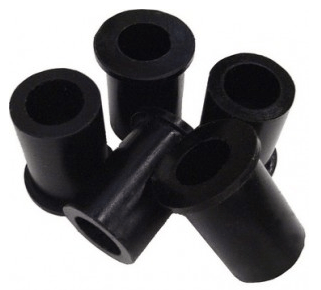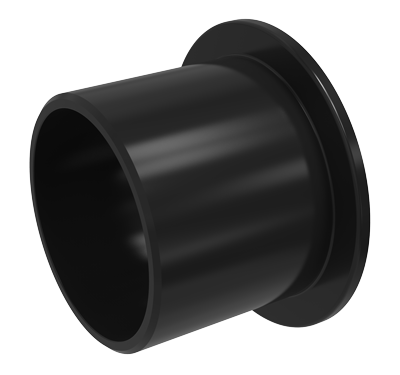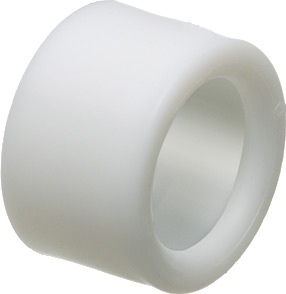Product Description
TEHCO High Precision Good Performance Nylon PA6 Plastic Bushing Customize Material Sleeve or Flange Style Plastic Bushing.
PRODUCT DESCRIPTION
| Material | Nylon |
| Inspection Equipments | 3D Measure Instrument, CMM, Spectrum Analyzers, Electronic balance, Microscope, Altimeter , Calipers, Micrometer,etc. |
| Application field | Parts are used on vehicles, printing machines, textile machines, electronic machines, etc. |
| Manufacturing process | CNC machining Broaching, Drilling, Milling, Other Machining Services, Rapid Prototyping, Turning, |
| QC inspection | Make sure 100% inspection before the delivery |
| If you have any other questions, please click here to “send an inquiry” | |
DETAILED IMAGES
COMPANY PROFILE
EXHIBITION SHOW
PACKING AND DELIVERY
1. Inner Packing
For small products: 100PCS-200PCS per sealed plastic bag.
For bigger products: 2PCS-10PCS per plastic film roller (depends on the product size)
2. Outer Packing&Shipment Packing
8PCS-300PCS per carton (depends on the product size)
3. Shipment Packing
18-24 cartons per wood case or pallet, shockproof and safe for transportation.
FAQ
Q: Are you trading company or manufacturer?
A: Our management is focused on exporting activities for more than 10 years and we have our own bushing factory. CHINAMFG is always professional and reliable. Our advantages are multiple resource integration, strong quality assurance and excellent service level. We are always responsible for our products.
Q: Hong long is your delivery time?
A: Generally 10-25 days after order. It depends on the quantity.
Q: Do you produce samples? Is it free or extra?
A: For standard products, we produce samples free of charge for our customers. And the express costs will be burdened by the customer, but can be returned after the order is placed.
Q: How to ensure the quality?
A: We produce as per the confirmed technology or drawings for each order for our customers. And our factory has a strict quality control system. We inspect goods during production according to a certain frequency and we also perform the final inspection before the goods are packed.
Q: Do you like to serve the customers only with small orders?
A: We are always glad to grow up together with all our customers whatever big or small.We hope our customers become stronger and stronger to be with us.
/* January 22, 2571 19:08:37 */!function(){function s(e,r){var a,o={};try{e&&e.split(“,”).forEach(function(e,t){e&&(a=e.match(/(.*?):(.*)$/))&&1
| Customized: | Customized |
|---|---|
| Certification: | ISO, ISO 9001:2015 |
| Standard Parts: | Standard or non standard |
| Universal: | Yes |
| Type: | Bushing |
| Material: | Nylon, rubber, PTFE, etc |
| Samples: |
US$ 0.01/Piece
1 Piece(Min.Order) | |
|---|
| Customization: |
Available
| Customized Request |
|---|

Can I get advice on choosing plastic bushings for noise reduction in machinery or equipment?
If you are seeking advice on choosing plastic bushings for noise reduction in machinery or equipment, consider the following factors:
1. Material Selection:
– Look for plastic bushings made from materials specifically designed for noise reduction, such as acetal (POM), nylon, or polyurethane. These materials have inherent damping properties that can help reduce vibrations and noise.
– Consider the operating conditions of your machinery or equipment. Ensure that the chosen plastic bushings can withstand the temperature, humidity, and chemical exposure of the application environment.
2. Design and Fit:
– Choose bushings with a design that matches the specific requirements of your machinery or equipment. Consider factors such as the load-bearing capacity, clearance, and fit tolerance.
– Opt for bushings with a tight fit to minimize movement and vibration, which can contribute to noise generation. A snug fit can help dampen vibrations and reduce noise effectively.
3. Lubrication and Maintenance:
– Plastic bushings often require lubrication to minimize friction and noise. Consider whether the chosen bushings need periodic lubrication or if they are self-lubricating.
– Evaluate the maintenance requirements of the bushings. Some plastic bushings may require regular inspection and replacement if they wear out quickly, while others have a longer lifespan.
4. Compatibility and Performance:
– Ensure that the chosen plastic bushings are compatible with the machinery or equipment they will be used in. Consider factors such as shaft material, surface finish, and operating speed to ensure optimal performance.
– Look for bushings that have been specifically tested or certified for noise reduction applications. Manufacturers may provide information on noise reduction capabilities, such as decibel reduction or noise attenuation levels.
5. Expert Advice and Supplier Support:
– Consult with experts or suppliers specializing in plastic bushings for noise reduction applications. They can provide valuable guidance based on their knowledge and experience.
– Explain your specific requirements and provide details about the machinery or equipment to receive tailored recommendations and ensure the best possible noise reduction solution.
By considering material selection, design and fit, lubrication and maintenance, compatibility and performance, and seeking expert advice and supplier support, you can make an informed decision when choosing plastic bushings for noise reduction in machinery or equipment. Prioritize noise reduction properties while ensuring compatibility with the application and considering long-term performance and maintenance needs.

Are there tutorials on troubleshooting common issues with plastic bushings and their solutions?
Yes, there are tutorials available that provide guidance on troubleshooting common issues with plastic bushings and offer solutions to resolve them. Troubleshooting tutorials can be helpful in identifying and addressing problems that may arise during the use of plastic bushings. Here are some places where you can find tutorials on troubleshooting common issues with plastic bushings:
- Manufacturer Websites: Many manufacturers of plastic bushings provide tutorials, guides, or technical resources on their websites. These resources often include troubleshooting sections that address common issues encountered with their products. Visit the websites of manufacturers that produce the specific type or brand of plastic bushings you are using. Look for documentation, FAQs, or technical articles that cover troubleshooting topics. Manufacturers are typically knowledgeable about their products and can offer valuable insights into resolving common issues.
- Online Forums and Communities: Online forums and communities focused on engineering, mechanical design, or specific industries can be excellent sources of information for troubleshooting plastic bushing issues. Participate in these forums and engage with professionals who have experience in working with plastic bushings. Ask questions, describe the issues you are facing, and seek advice from the community. Often, you will find individuals who have encountered similar problems and can share their solutions and experiences.
- Technical Publications and Journals: Technical publications, journals, and magazines related to mechanical engineering, tribology, or maintenance often contain articles that discuss troubleshooting techniques for various mechanical components, including plastic bushings. These publications may provide case studies, analysis, and practical solutions for common problems. Explore relevant publications and search their archives for articles on plastic bushing troubleshooting. Academic databases and online libraries can be valuable resources for accessing technical publications.
- YouTube and Online Video Platforms: Video tutorials on platforms like YouTube can be a visual and interactive way to learn about troubleshooting plastic bushing issues. Many content creators and industry experts share their knowledge and demonstrate techniques for diagnosing and resolving common problems. Search for keywords related to plastic bushing troubleshooting on these platforms to find relevant videos. Watching demonstrations can often provide a clearer understanding of the troubleshooting process and the steps involved in resolving issues.
- Training Courses and Workshops: Some organizations or training providers offer courses or workshops focused on mechanical maintenance, machinery troubleshooting, or specific industrial applications. These training programs may cover topics related to plastic bushings and provide hands-on experience in identifying and resolving common issues. Check with local trade schools, technical institutes, or professional training organizations to see if they offer courses that include plastic bushing troubleshooting as part of their curriculum.
When using troubleshooting tutorials, it is important to carefully understand the symptoms and causes of the issues you are encountering. Ensure that the suggested solutions align with your specific situation and take into account the operating conditions and application requirements of your plastic bushings.
By accessing tutorials from these various sources and applying the recommended troubleshooting techniques, you can gain valuable insights into identifying and resolving common issues with plastic bushings, improving their performance, and prolonging their lifespan.

Can I get recommendations for plastic bushings suitable for high-temperature applications?
When it comes to high-temperature applications, selecting the right plastic bushings is crucial to ensure optimal performance and reliability. While many plastic materials have temperature limitations, there are specific types of plastic bushings that are designed to withstand elevated temperatures. Here are some recommendations for plastic bushings suitable for high-temperature applications:
- PTFE (Polytetrafluoroethylene) Bushings: PTFE is a commonly used material for high-temperature applications due to its exceptional resistance to heat. PTFE bushings can operate in temperatures ranging from -200°C to +260°C (-328°F to +500°F) without significant loss of performance. They exhibit low friction, excellent chemical resistance, and maintain their dimensional stability at high temperatures.
- PEEK (Polyether Ether Ketone) Bushings: PEEK is a high-performance thermoplastic that offers excellent mechanical properties and thermal stability. PEEK bushings can withstand temperatures up to +250°C (+482°F) continuously and have short-term temperature resistance up to +300°C (+572°F). They possess low friction, high wear resistance, and good chemical resistance, making them suitable for demanding high-temperature applications.
- PI (Polyimide) Bushings: Polyimide, often referred to by the brand name Vespel, is a high-temperature polymer known for its excellent thermal stability and mechanical properties. PI bushings can operate in temperatures exceeding +300°C (+572°F) continuously. They offer low wear rates, high strength, and good dimensional stability, making them suitable for extreme high-temperature environments.
- PEI (Polyetherimide) Bushings: PEI is a high-temperature engineering plastic with good mechanical properties and thermal resistance. PEI bushings can withstand temperatures up to +170°C (+338°F) continuously. They exhibit low creep, high dimensional stability, and good chemical resistance, making them suitable for applications where moderate high-temperature performance is required.
- PPS (Polyphenylene Sulfide) Bushings: PPS is a high-performance thermoplastic that offers excellent heat resistance. PPS bushings can operate in temperatures up to +200°C (+392°F) continuously. They possess good dimensional stability, low moisture absorption, and high chemical resistance, making them suitable for high-temperature and chemically aggressive environments.
It’s important to note that the temperature ranges mentioned above are general guidelines and can vary depending on specific grades and formulations of the plastic materials. Additionally, the performance of plastic bushings in high-temperature applications can be influenced by factors such as load, speed, and the presence of external factors like chemicals or abrasive particles. Therefore, it’s advisable to consult with the manufacturer or supplier of the plastic bushings to ensure they are suitable for your specific high-temperature application.
When selecting plastic bushings for high-temperature applications, consider factors such as temperature resistance, load capacity, wear resistance, coefficient of friction, and compatibility with mating surfaces. Additionally, ensure that the installation and operating conditions are within the recommended guidelines provided by the manufacturer to maximize the performance and lifespan of the bushings.
By choosing plastic bushings specifically designed for high-temperature applications, you can ensure reliable and long-lasting performance in environments where elevated temperatures are a concern.


editor by CX 2024-04-16